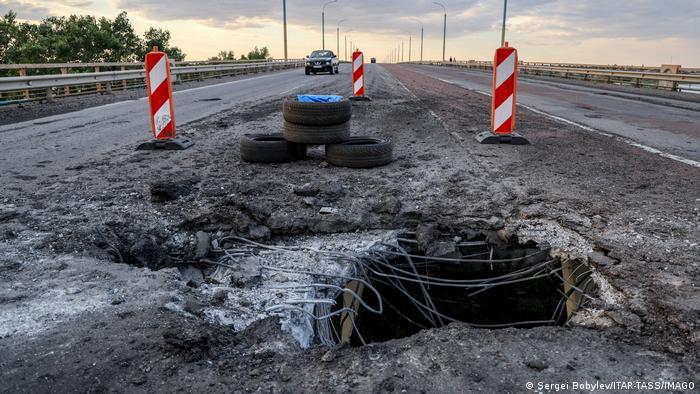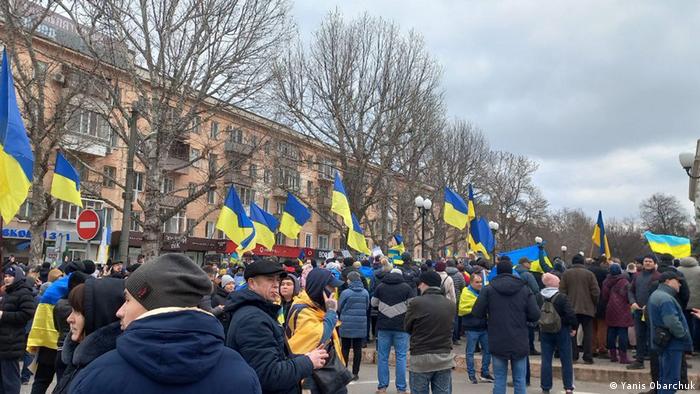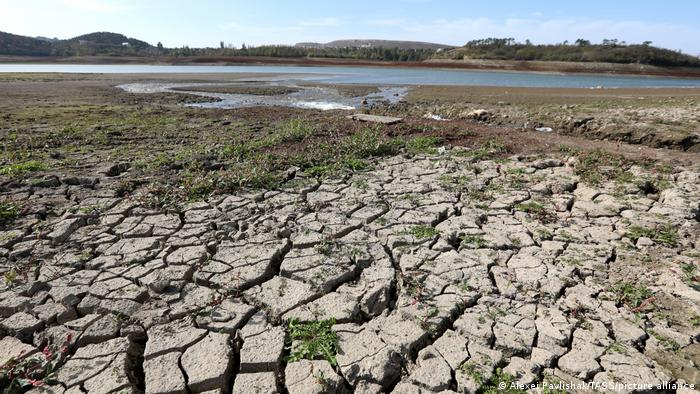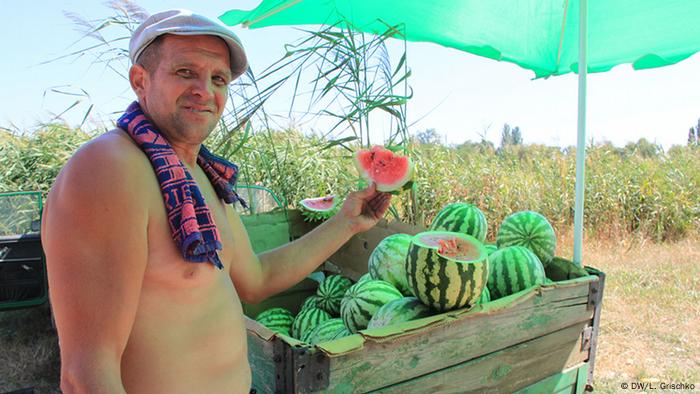Kherson: Ukraine battles to reclaim the gateway to Crimea
Russia occupied the southern Ukrainian region of Kherson early on in its invasion. Now, Kyiv's counteroffensive is trying to recapture the strategically important area.

The Antonovsky Bridge in Kherson bears the traces of Ukraine's recent rocket attacks
It started with holes in the pavement. Cellphone videos from July 19 show the impact of rockets that struck the Antonovsky Bridge, one of the largest and most important in Kherson.
With the southern Ukrainian city currently controlled by Russian troops, the Ukrainian army has been deploying the HIMARS precision missile system in the area. Kyiv has been using these weapons, which arrived recently from the US, to fire upon the 1,366-meter (4,482 feet) bridge, disrupting logistics for the Russian troops located on the right bank of the Dnieper, Ukraine's largest river. These attacks, and similar ones that followed, paved the way for Ukraine's counteroffensive, which began in August.
Other bridges, along with Russian weapons depots in the region, have been consistently targeted since then. In early September, Ukrainian President Volodymyr Zelenskyy announced that various towns had been recaptured. The fight for Kherson could become one of the most crucial events of the war in the coming months.
Struggle for fresh water in Crimea
Russia captured the entire Kherson region during the early days of the invasion. Military resistance was minimal, and the region's capital city, Kherson, home to some 280,000 people, was occupied in early March.
Amateur videos show how Ukrainian civilians, most of whom speak Russian, protested the Russian troops. No other region of Ukraine was occupied so quickly. It remains unclear how this was possible, and the question remains a painful one for the government in Kyiv.

Ukrainians protested against Russia's takeover of Kherson in the early days of the invasion
The region of Kherson extends some 28,500 square kilometers (11,000 square miles), making it nearly as large as Belgium. The landscape is characterized by steppes — wide open spaces as far as the eye can see. Viewed strategically, it may well be the most important region of southern Ukraine due to its access to two seas: the Sea of Azov in the east and the Black Sea in the west.
More importantly: the region of Kherson offers the only land connection to Crimea. It is the gateway to the peninsula that Russia annexed in 2014 — and this gateway has remained largely open during the Russian invasion. No bridges were blown up, which could have halted troop deployments. Large Russian units in Crimea were able to advance hundreds of kilometers to the north.
Russia's principal goal during that operation was likely gaining control of the North Crimean Canal, which starts near the city of Nova Kakhovka, some 80 kilometers east of Kherson, and ends in the Crimean city of Kerch. The peninsula is chronically short of water; ever since Soviet times, it has received fresh water from the Dnieper via this canal. Following the annexation, Ukraine stopped this water flow, which led to problems for the peninsula's water-intensive agriculture industry. In response, Russia blew up a dam that had been built in 2014, once again restoring the water supply.

Crimea receives fresh water via the North Crimean Canal. Supply cutoffs following
Russia's annexation resulted in shortfalls
By occupying Kherson and other cities near the mouth of the Dnieper, the Russian army was also simultaneously able to block Ukraine's all-important water access to the Black Sea.
Kherson known for shipbuilding and watermelons
Kherson is best known for its shipbuilding industry. The city at the mouth of the Dnieper was founded at the end of the 18th century, when the region was part of the Russian Empire. It was named after the ancient Greek settlement Chersonesus in Crimea.
Kherson is home to the oldest seaport on Ukraine's Black Sea coast, and it is where the first warships for the Russian Black Sea fleet were built. Since Soviet times, Kherson has specialized in civilian freight ships, including tankers. In February 2022, just a few days before the Russian invasion, the shipyard announced it had signed a contract for the construction of four cargo ships for the Netherlands.
When Ukrainians think of Kherson, however, the first thing that comes to mind is not ships, but watermelons and tomatoes. Kherson watermelons are particularly legendary. Every year, starting in August, Ukrainian stores are full of the sweet fruit — though not this year. Across social networks, photos of Ukrainian soldiers holding a watermelon in their hands have become a symbol of territorial recapture.

Watermelons from Kherson are well-known across Ukraine
The Kherson region is famous for its cultivation of fruits and vegetables. It boasts some 2 million hectares of agricultural land — the most in all of Ukraine, and nearly twice as much as in the Netherlands. It should come as no surprise that the first Ukrainian ketchup manufacturer, Chumak, was founded there in 1993, in the city of Kakhovka. The company, which was started by two Swedes, is considered one of independent Ukraine's success stories. Its website proudly notes that it owns Europe's largest cucumber field.
Kakhovka was occupied by Russian troops during the first days of the war. Chumak, currently number two on the Ukrainian market, halted production and moved its headquarters to Kyiv.
No quick path to victory
Due to its location near Crimea, Russia is likely to put up a strong defense of the occupied territory of Kherson and the North Crimean Canal in particular. Observers in Ukraine and the West expect a long fight, and reckon Ukraine will not launch a frontal offensive due to insufficient forces.
Instead, it is thought that Kyiv will attempt to push out Russian troops through local attacks. In addition to freeing various villages, Ukraine's counteroffensive also scored an additional victory: Earlier this week, a "referendum" for unification with Russia, modeled after a similar vote in Crimea in 2014, was postponed until further notice.
This article has been translated from German.
No comments:
Post a Comment